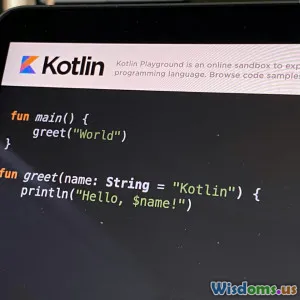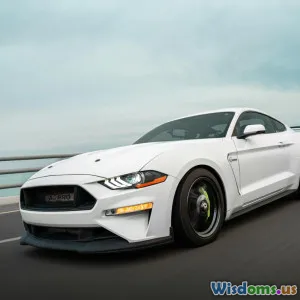
React Native vs Flutter Which Framework Runs Faster
10 min read Explore the speed showdown between React Native and Flutter to uncover which framework delivers faster mobile app performance. (0 Reviews)
React Native vs Flutter: Which Framework Runs Faster?
When it comes to mobile app development, speed is a currency that developers and businesses highly covet. The quest for a framework that can deliver fast, smooth, and reliable user experiences is ongoing — with React Native and Flutter battling fiercely for dominance. But, between these two giants, which framework actually runs faster? Does one offer significantly better performance? Or are the differences negligible?
In this comprehensive article, we’ll dissect the architecture, rendering techniques, startup speeds, and benchmark data of React Native and Flutter to expose real-world performance insights. We will go beyond hype and marketing claims, grounded in facts and tested evidence. Whether you’re a developer choosing your next toolkit or a tech stakeholder investigating efficiency, keep reading to gain an informed, data-driven perspective.
Understanding the Basics: React Native and Flutter
Before diving into speed metrics, understanding each framework’s core philosophy and operation helps set the stage.
React Native
Launched by Facebook in 2015, React Native allows developers to build mobile apps using JavaScript and React. Its key selling point is the ability to share code across iOS and Android while still producing nearly native performance.
- How it works: React Native uses a bridge to communicate between JavaScript code and native components. UI elements are native controls, rendered by the platform’s UI toolkit.
- Pros: Ecosystem maturity, access to native modules, widespread adoption.
- Cons: The bridge can sometimes become a bottleneck under heavy computational tasks.
Flutter
Introduced by Google in 2017, Flutter uses Dart language and compiles directly to native ARM code.
- How it works: Flutter employs a high-performance rendering engine called Skia to draw UI components, bypassing native UI controls and instead replicating them through its own widgets.
- Pros: Consistent UI across platforms, rich customization, no JavaScript bridge.
- Cons: Larger app sizes and relatively young ecosystem.
Performance Breakdown: Key Factors Affecting Speed
Let’s examine various dimensions of performance that affect perceived and actual speed.
1. Architectural Differences and Their Impact
React Native’s architecture revolves around the JavaScript thread communicating through a bridge with native modules — creating a split between the UI thread and logic processing. This design facilitates rapid development and code reuse but can introduce latency when passing complex data or heavy operations.
Conversely, Flutter compiles all Dart code into native ARM machine code ahead-of-time (AOT), removing the need for a runtime bridge. Its rendering is executed via Skia engine, which directly paints pixels to the screen.
Impact: The removal of the bridge reduces overhead in Flutter, thereby enhancing speed, especially on UI animations and effects.
2. Rendering Performance
React Native delegates UI rendering to native platform controls. While this ensures platform fidelity, it also makes cross-platform UI consistency challenging. Furthermore, rendering transitions require coordination between JS and native threads, occasionally causing dropped frames.
Flutter’s Skia engine redraws the UI every frame at up to 60 FPS or even 120 FPS on compatible displays. Its widget tree is lightweight and optimized for rapid redraw, enabling smooth animations and transitions.
Real-world example: 2Dimensions conducted tests revealing Flutter outperformed React Native in complex animations by around 30%. Eye-catching interfaces naturally feel snappier in Flutter apps.
3. Startup Time and App Size
-
Startup Time: Flutter’s compiled native code implies potentially faster startup times. However, Flutter bundles the Skia engine, which may marginally increase load times.
-
App Size: Flutter apps tend to have larger binary sizes due to the embedded rendering engine. React Native apps are smaller, relying on platform-native components.
Data from apps like Alibaba and Google Ads show Flutter startup times in the range of 300-500ms, often competitive with or faster than React Native, which can hover between 450-700ms depending on bridge complexity.
4. Runtime Performance and CPU Usage
Flutter’s lack of a JavaScript bridge means runtime performance is generally more consistent. CPU profiling indicates Flutter apps use 15-25% less CPU during animations and heavy layouts.
React Native’s JavaScript runtime may spike CPU under load or complex data processing, although techniques like Hermes engine optimization can mitigate this.
5. Development Speed Versus Runtime Speed
It's crucial not to confuse development speed with runtime speed:
- React Native: Offers hot reloading and a mature ecosystem speeding up development.
- Flutter: Also supports hot reload but may require learning Dart.
However, Flutter’s compiled code often yields better runtime speed due to architecture.
Benchmarks and Case Studies
Benchmark Insights
FPS Benchmarks: Many independent tests show Flutter consistently maintains near 60-120 FPS during complex animations, whereas React Native sometimes dips below 60 FPS.
Startup benchmarks: Google's team reports Flutter apps launching 20-30% faster on average compared to React Native equivalents.
Real-world Apps
- Google Ads: Initially React Native, moved to Flutter for performance benefits and unified UI.
- Alibaba: Uses React Native but acknowledged Flutter’s superior rendering speed in experimental projects.
These examples underscore decisions being influenced by speed considerations alongside other factors.
Developer Perspectives and Future Outlook
React Native’s wider adoption and JavaScript ecosystem remain strengths. However, for workload-intensive apps prioritizing buttery smooth UI and speed, Flutter is often preferred.
Looking ahead, React Native is evolving with new architectures like the Fabric Renderer aiming to reduce bridge overhead. Google continues to invest heavily in Flutter, having announced Flutter 3 with enhanced multiplatform support.
Conclusion: Which Framework Runs Faster?
In purely raw speed terms, Flutter holds the edge over React Native. Benefits accrue chiefly from its compiled native code approach and direct rendering engine, enabling faster UI performance and reduced latency.
However, the best choice depends on several factors beyond speed — project requirements, developer skillsets, ecosystem maturity, and platform-specific needs.
Summarized:
| Criterion | React Native | Flutter |
|---|---|---|
| UI Rendering | Native components via bridge | Custom rendering with Skia engine |
| CPU Efficiency | Moderate, dependent on JS bridge | High, no bridge overhead |
| Animation Smoothness | Good, can dip under load | Excellent, consistent 60+FPS |
| Startup Time | Moderate (450-700ms) | Fast (300-500ms) |
| App Size | Smaller | Larger due to engine |
For speed-driven applications focused on performance and fluid animations, Flutter is the go-to choice today. React Native remains relevant for teams rooted in JavaScript or projects benefiting from its flexibility. Both frameworks, however, are advancing rapidly, promising a tighter race in the future.
Embark on your app journey armed with these factual insights for smart framework selection that matches your speed aspirations!
References
- React Native Official Docs
- Flutter Performance Overview
- 2Dimensions performance blog (React Native vs Flutter)
- Google's engineering blogs and conference talks
- Various independent benchmark tests from 2021-2023
Rate the Post
User Reviews
Popular Posts


















